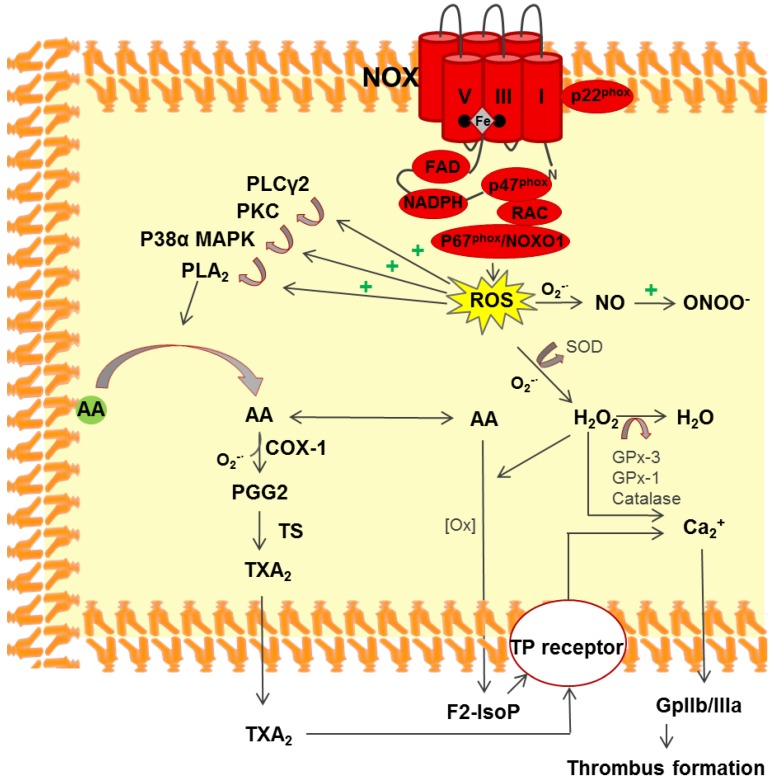Figure 2.
The role of NOX (NOX1 and/or NOX2) in thrombus formation via ROS production. Increased intracellular ROS production enhances (+) redox internal signaling. ROS potentiate the PLCγ/PKC/MAPKp38 signaling cascade, thereby inducing phospholipase A2 (PLA2) activation via (arrows) phosphorylation. PLA2 catalyzes the hydrolysis of the phospholipid sn2-acyl bond at the membrane, releasing arachidonic acid (AA) into the cytoplasm. AA can either be converted by COX1 into prostaglandin G2 (PGG2), an intermediate in the synthesis of thromboxane A2 (TxA2), or it can be oxidized by peroxides to form F2 isoprostane (F2-IsoP). Both can bind the prostanoid TP receptor during thrombosis/hemostasis. O2−· can be converted into the more membrane permeable H2O2 by superoxide dismutase (SOD). H2O2 acts as a second messenger in various cellular signaling pathways, and it also induces Ca2+ mobilization. Ca2+ mobilization precede the glycoprotein GPIIb/IIIa (or αIIbβ3) affinity modulation to fibrinogen binding. Alternatively, O2−· reacts with NO, leading to reactive nitrogen species such as ONOO−.

